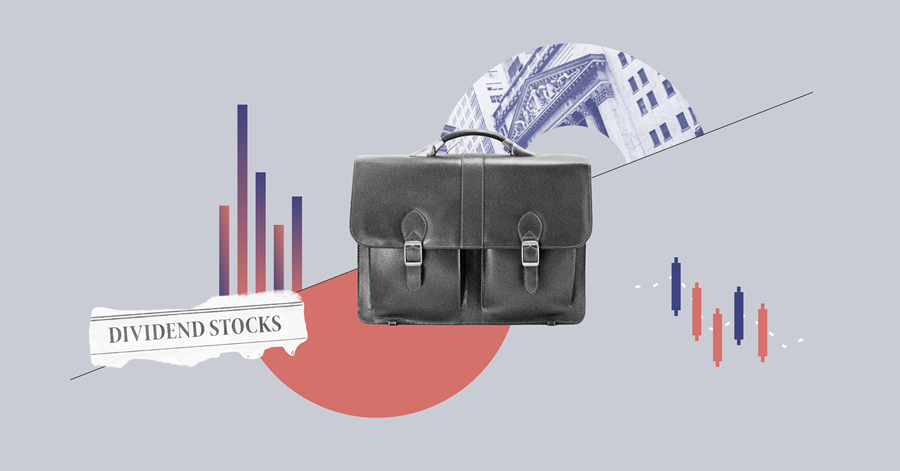The vast majority of our Ultimate Stock-Picker list of top US equity fund managers have never been mistaken for dividend investors. That said, a handful of them are more focused on income producing stocks in their pursuit of investment gains.
We could also argue that Warren Buffett has shifted his investment portfolio to be more of an income generator, with the firm's four largest stock holdings; wide-moat Wells Fargo (WFC), narrow-moat Kraft Heinz (KHC), wide-moat Coca-Cola (KO), and narrow-moat IBM (IBM), which accounted for 59% of the insurance company's equity portfolio at the end of 2015, all yielding more than the S&P 500 index.
When we screen for top dividend-paying stocks among the holdings of our Ultimate Stock-Pickers we try to home in on the highest-quality names that are currently held with conviction by our top managers. We look for holdings that are widely held, by five or more of our top US equity fund managers, are yielding more than the S&P 500, represent firms with wide or narrow economic moats, and have uncertainty ratings of either low or medium.
Once our filtering process is complete, we create two tables, one that reflects the top 10 dividend-yielding stocks of our Ultimate Stock-Pickers, and the other representing stocks that are paying dividends in excess of the S&P 500 that are widely held by our top managers.
With valuation and safety being a top concern for investors, especially given the selloff in the global equity markets in January and February, we continue to believe that the best way for investors to protect their capital is to invest in quality businesses at attractive prices. As such, we have once again homed in on the names on both lists that are trading at less than 80% of our analysts' fair value estimates, believing that there might be more value to be had in solid dividend payers offering investors a wider than average margin of safety.
UK investors should bear in mind that these stocks pay dividends in US dollars and currency fluctuations will affect yields.
Sanofi (SNY)
Current Yield: 3.86%
Sanofi's wide lineup of branded drugs and vaccines and robust pipeline create strong cash flows and a wide economic moat. Growth of existing products and new product launches should help offset weakening pricing in the insulin market.
The company also harnesses its research and development group to bring new drugs to emerging markets. While pricing in emerging markets is not usually as strong as in developed markets, the company can still leverage its investment in developing new drugs for developed markets by bringing the drugs to emerging markets. The rapid economic growth in emerging markets has created new geographic markets for Sanofi's drugs. A history of acquisitions and robust cash flow from operations means Sanofi could take advantage of further growth opportunities through external collaborations.
Pfizer (PFE)
Current Yield: 3.79%
Pfizer's foundation remains solid, based on strong cash flows generated from a basket of diverse drugs. The company's large size confers significant competitive advantages in developing new drugs. This unmatched heft, combined with a broad portfolio of patent-protected drugs, has helped Pfizer build a wide economic moat around its business.
Pfizer's size establishes one of the largest economy of scale in the pharmaceutical industry. In a business where drug development needs a lot of shots on goal to be successful, Pfizer has the financial resources and the established research power to support the development of more new drugs. Also, after many years of struggling to bring out important new drugs, Pfizer is now launching several potential blockbusters in cancer, heart disease, and immunology.
Novartis (NVS)
Current Yield: 3.75%
With strong positions in multiple key health-care businesses, Novartis is well-positioned for steady long-term growth. Strong intellectual property supporting multibillion-dollar products, combined with an abundance of late-pipeline products, creates a wide economic moat.
Novartis derives its strength from a diversified operating platform that includes branded pharmaceuticals, generics, eye-care products, and consumer products. Although the majority of its competitors focus solely on the high-margin branded pharmaceutical segment, Novartis runs several complementary operations that reduce overall volatility and create cross-segment synergies. For example, not only does its generic business, Sandoz, serve to grab a portion of the billions of dollars in competitive branded products losing patent protection during the next 10 years, but it also extends the life cycle of in-house products as patents expire.
US Bancorp (USB)
Current Yield: 2.49%
There are few domestic banks that can match the operating performance of U.S. Bancorp since the financial turmoil of 2008/09. U.S. Bancorp's longstanding ability to post excess returns on capital is rooted in its superior credit underwriting, fee generation, strategically beneficial acquisitions, and sound management. As with any high-quality bank, strong loan underwriting is fundamental. At the height of the financial crisis, U.S. Bancorp never incurred a loss from severe credit charge-offs as seen at other institutions. With its well-diversified mix of loans and sound underwriting practices, net charge-offs peaked at just over 2% of loans during the crisis. U.S. Bancorp has built an imposing slate of fee-based businesses from credit cards, wealth management, and payments processing, which account for approximately half of total revenue.








.jpg)























